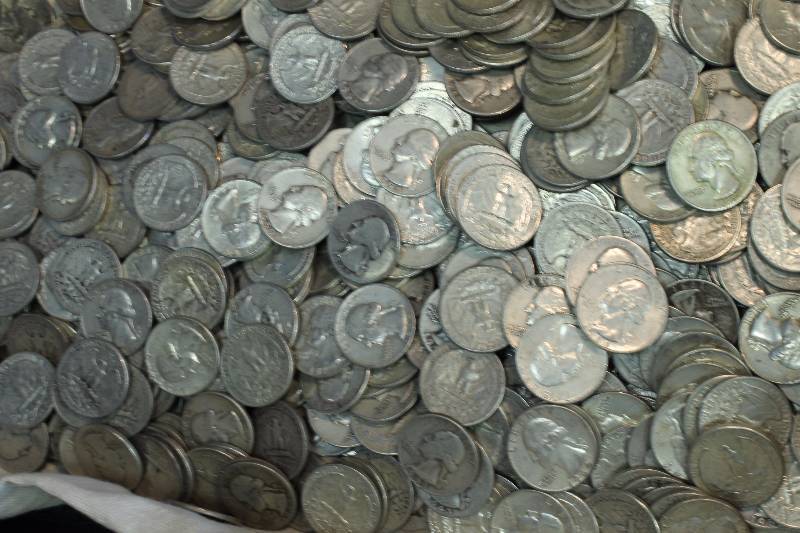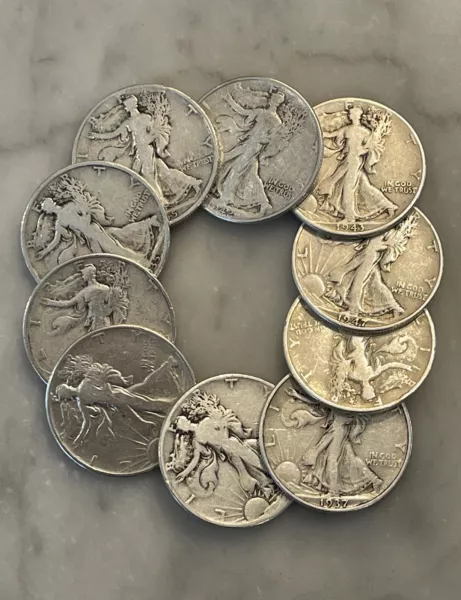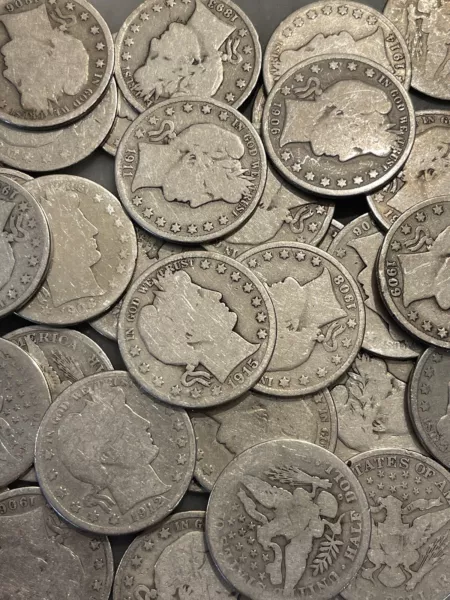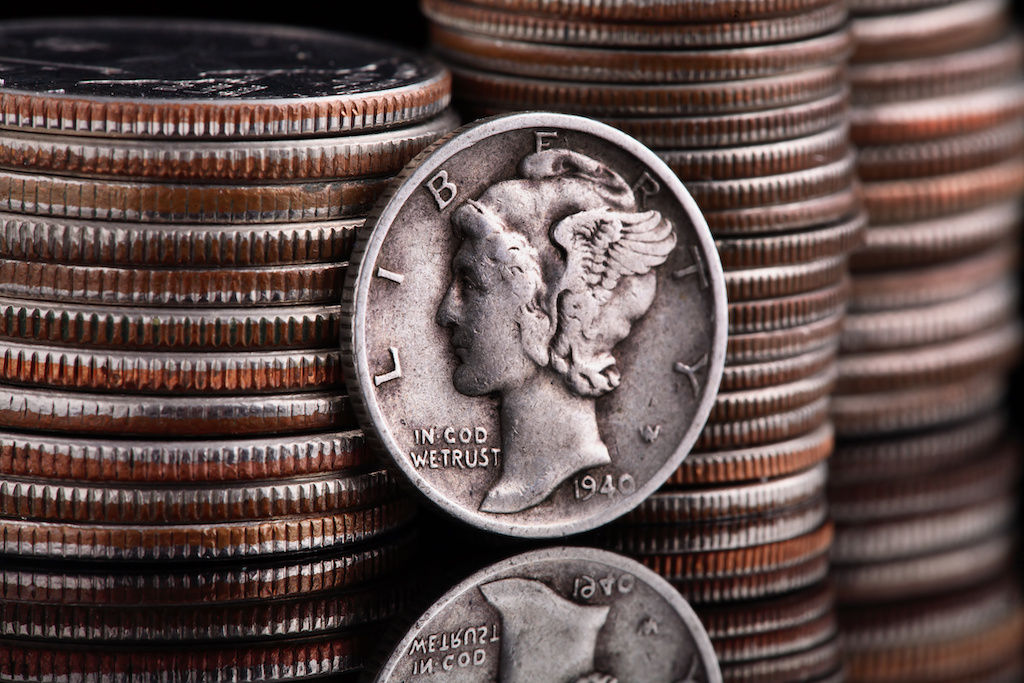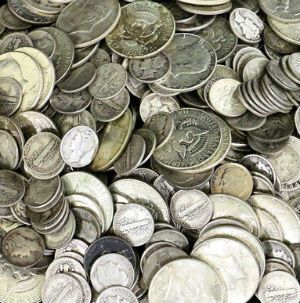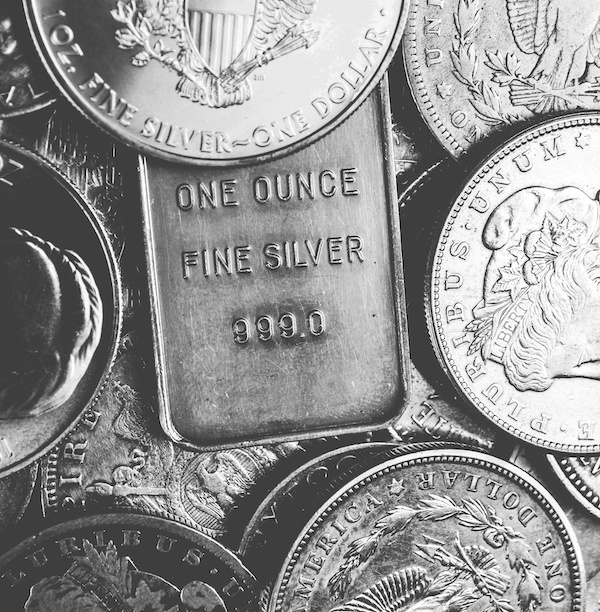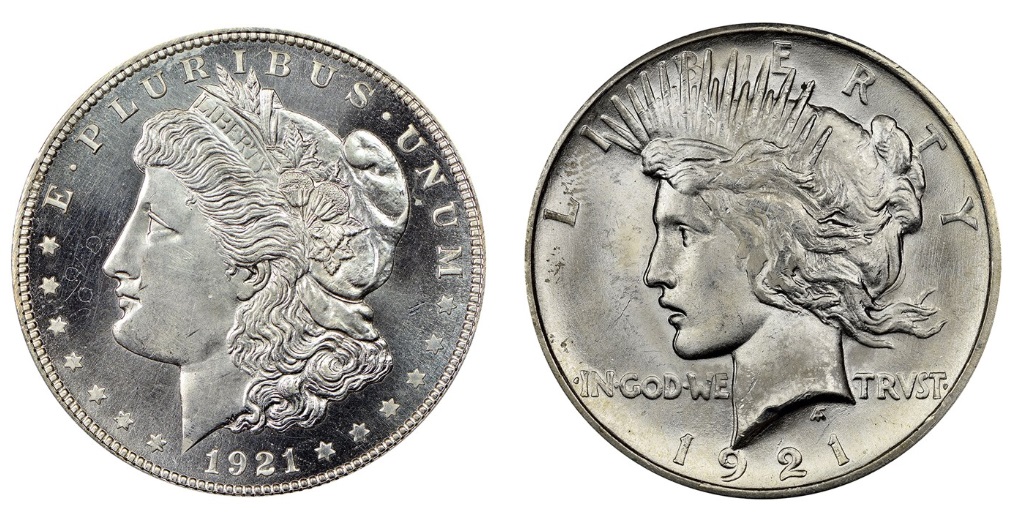Junk silver is one of the most efficient, flexible ways to own physical silver, especially when premiums are compressed. If you’ve ever wondered what junk silver is, what it’s worth today, and how many ounces are in a bag, this guide covers the essentials (and the quick math) so you can compare prices with confidence.
What Is Junk Silver? (and why investors love it)
Junk silver refers to circulated U.S. coins with no significant numismatic premium whose value derives mainly from their silver content. Most are 90% silver coins minted pre-1965 (dimes, quarters, half dollars, and silver dollars). The category also includes 40% silver halves (1965–1970) and certain 40% Bicentennial issues, plus 35% silver War Nickels (1942–1945).
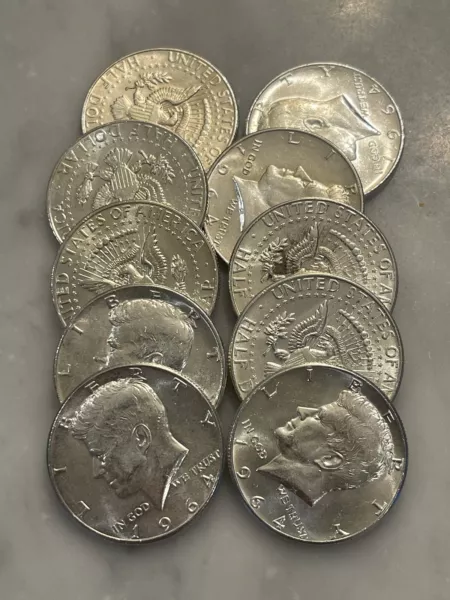
Why stackers like it:
- Tight spreads & high liquidity vs many modern collectibles
- Small denominations (great for flexibility and resale)
- Recognizable designs that are easy to verify
- Often the lowest premium per ounce among government-minted options when markets are calm
90% vs 40% vs 35%: What U.S. Coins Count as “Junk Silver”?
90% Silver (pre-1965)
- Dimes: Barber (1892–1916), Mercury (1916–1945), Roosevelt (1946–1964) – 0.0715 oz each (circulated)
- Quarters: Barber (1892–1916), Standing Liberty (1916–1930), Washington (1932, 1934–1964) – 0.1787 oz each
- Half Dollars: Barber (1892–1915), Walking Liberty (1916–1947), Franklin (1948–1963), 1964 Kennedy – 0.3575 oz each
- Silver Dollars: Morgan (1878–1921), Peace (1921–1935) – 0.7735 oz each (these often carry some collector premium)
40% Silver
- Kennedy Half Dollar: 1965–1970 – 0.1479 oz each
- Bicentennial 40%: special Mint sets only (1976) – Half Dollar 0.1479 oz, Quarter 0.0739 oz, Eisenhower Dollar 0.3161 oz
35% Silver
- War Nickels: 1942–1945 (mint mark above Monticello) – 0.0563 oz each
Great low-denomination junk silver; premium and buyback spreads can differ by dealer.
Fast Reference: Ounces per Face Value (90% Coins, Circulated)
| Face Value (90%) | Approx. Troy Ounces* | Melt Value |
|---|---|---|
| $1 | 0.715 | $52.99 |
| $5 | 3.575 | $264.97 |
| $10 | 7.15 | $529.94 |
| $50 | 35.75 | $2649.7 |
| $100 | 71.5 | $5299.39 |
| $500 | 357.5 | $26496.95 |
| $1,000 | 715 | $52993.91 |
*Uses the common circulated factor (0.715 oz/$1 FV). Theoretical BU is 0.7234 oz/$1 FV.
How to Tell if a Coin Is Silver (quick tests that work)
- Date check: Dimes/quarters/halves 1964 and earlier are 90% silver. Halves 1965–1970 are 40% (Bicentennial 40% only in special sets). War Nickels 1942–1945 are 35%.
- Edge test: 90%/40% silver coins have a solid silver-colored edge (no copper stripe).
- Weight/dimensions: A precise scale + calipers often reveal clad fakes.
- Ping (ring) test: Silver “rings” distinctly; clad sounds duller. Use responsibly (avoid dropping valuable coins).
- Magnet: Silver is not magnetic (note: many counterfeit alloys also aren’t; use multiple tests).
Junk Silver: How to Estimate Melt Value
Formula:
Melt value ≈ (troy ounces of silver per coin or per $1 face value) × (spot price)
Example at $74.12/oz spot
- 1 dime (90%): 0.0715 × $74.12 = $5.3
- 1 quarter (90%): 0.1787 × $74.12 = $13.24
- 1 half (90%): 0.3575 × $74.12 = $26.5
- $100 FV (90%): 71.5 × $74.12 = $5299.39
Premiums vs spot:
- $1–$100 FV lots: typically +1% to +6% over melt in calm markets
- Bags ($500–$1,000 FV): bulk discounts can tighten spreads (often +0% to +4% in quiet periods)
- War Nickels/40% halves: spreads vary by dealer; often +2% to +8% over melt
- In stress spikes, expect premiums to widen.
Selling Junk Silver: How to Get Fair Value
- Count face value first (e.g., $100 FV of dimes = 1,000 dimes).
- Calculate melt (use table above or our junk silver calculator).
- Compare buy quotes from multiple reputable dealers/coin shops.
- Watch the spread: reputable dealers will quote close to melt for common 90% material; premium depends on lot size and payment method.
- Documentation: Keep receipts; larger sales may require reporting (dealer policies vary).
Note: Banks won’t pay above face value. Sell to bullion/coin dealers for market value.
Where to Buy (and Compare Premiums)
Premiums vary by minute and by dealer. Before you buy:
- Compare live dealer prices for rolls and bags of Roosevelt/Mercury dimes, Washington quarters, Walking Liberty/Franklin/Kennedy halves, and War Nickels.
- Look for all-in delivered costs (payment method and shipping matter).
- When premiums are low, larger face-value bags can be most cost-efficient.
Tip: Use FindBullionPrices.com to compare junk silver for sale and to see which dealers are offering the cheapest per-ounce pricing right now.
90% vs 40% vs Rounds & Bars: Which Should I Buy?
- 90% (“junk silver”): Best for flexibility and recognizability. Slightly higher premiums than big bars, but highly liquid.
- 40%: Still liquid, but fewer buyers specialize; spreads can be a bit wider.
- 1-oz rounds & 10-oz bars: Lowest fabrication cost; premiums can be 3–6% over spot in calm markets.
- 100-oz bars: Often tightest spreads (2–4% in quiet markets), best for bulk ounce accumulation.
The right mix depends on your goals: lowest cost per ounce vs maximum flexibility in resale.
Counterfeits & Practical Risk Notes
- Circulated junk silver is harder to fake in volume than modern products, but fakes exist (especially for dollars). Verify weight, dimensions, and edge; buy from trusted dealers.
- Legal note: It’s legal in the U.S. to melt silver coins; the U.S. Mint’s prohibition applies to pennies and nickels, not silver coinage (laws can change, verify if unsure).
- Precious metals are volatile. Consider diversification, storage/insurance, and your time horizon. This is educational content, not financial advice.
Per-coin Silver Content
Typical Circulated 90%
| Coin | Silver Content (troy oz) | Notes |
|---|---|---|
| Dime | ~0.0715 | |
| Quarter | ~0.1787 | |
| Half Dollar | ~0.3575 | |
| Silver Dollar (Morgan/Peace) | 0.7735 | Often numismatic premiums apply |
Other Common Coins
| Coin | Years | Purity | Silver Content (troy oz) | Notes |
|---|---|---|---|---|
| Kennedy Half Dollar (40%) | 1965–1970 | 40% | 0.1479 | Silver-clad issues; 1970-D issued only in mint sets (not for circulation). |
| War Nickel (“Wartime” alloy) | 1942–1945 | 35% | 0.0563 | Large mintmark over Monticello; special wartime silver composition. |
| Bicentennial Quarter (silver issue) | 1976 | 40% | 0.0739 | From 40% silver proof/uncirculated 3-coin sets only (not regular clad). |
| Bicentennial Half Dollar (silver) | 1976 | 40% | 0.1479 | From 40% silver proof/uncirculated 3-coin sets only. |
| Bicentennial Eisenhower Dollar (silver) | 1976 | 40% | 0.3161 | From 40% silver proof/uncirculated 3-coin sets only. |
FAQ
What is junk silver?
Circulated U.S. coins, mainly pre-1965 90% silver, valued for bullion content rather than rarity.
How much is $1 face value of silver worth?
Approx. 0.715 troy oz × spot (e.g., at $40/oz ≈ $28.60).
How many 90% silver dimes make an ounce?
About 14 dimes (each ≈ 0.0715 oz).
How much silver is in $1 face value of 90% coins?
- Theoretical (BU/unworn): 0.7234 troy oz
- Typical circulated average: 0.715 troy oz (use this in real-world math)
How many 90% silver dimes make one troy ounce?
- Each dime ≈ 0.0715 oz → ~14 dimes per troy ounce (13.99 rounded up)
How many ounces are in a “$100 face” junk silver bag?
- $100 FV (90%) ≈ 71.5 troy oz (circulated assumption)
How many dimes are in $100 face?
- 1,000 dimes (since each dime is $0.10 face value)
Is junk silver a good investment today?
It can be, especially when premiums are low. It’s liquid, recognizable, and fractional, but spot prices are volatile.
Where can I see junk silver price today and compare dealers?
Use FindBullionPrices.com to compare live dealer pricing, premiums, and per-ounce cost for rolls and bags.
Final Thought
When premiums are tame, junk silver offers an elegant balance of recognizability, small denominations, and liquidity—and with a little math, you’ll know exactly what you’re paying per ounce. Compare junk silver price listings and bags across dealers before buying; the difference in all-in delivered cost adds up fast.
